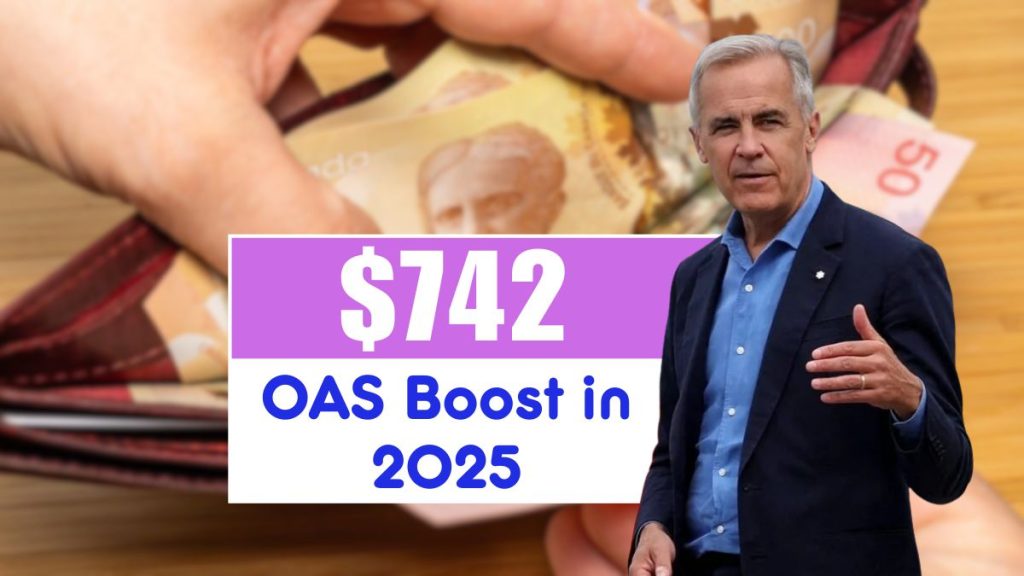If you’ve stumbled across online posts or social media headlines about a “Canada October $3,555 Widow Pension Support”, you may be asking: is this real, or just another internet rumor? Let’s set the record straight there is no official Canadian government program that pays widows or widowers exactly $3,555 per month.
What exists are long-standing supports such as the Canada Pension Plan (CPP) Survivor’s Pension, Old Age Security (OAS), and the Guaranteed Income Supplement (GIS). These programs provide financial stability for surviving spouses, but the actual amounts depend on many factors, including age, income, and the deceased spouse’s contributions to CPP.
This article breaks down the facts, clarifies common misconceptions, and guides you step by step through what widows and widowers can expect in 2025.
What Is the Canada October $3,555 Widow Pension Support?
The so-called “$3,555 widow pension” is a headline figure that has gained traction on social media. But here’s the truth:
- No Canadian government program pays a flat $3,555 per month to widows.
- The figure is likely an inflated number, created by combining several legitimate benefits such as CPP Survivor’s Pension, OAS, GIS, and provincial top-ups.
- Many blogs and community posts repeat this figure without official confirmation, leading to confusion.
In reality, widows and widowers do receive financial support, but payments vary widely. The average CPP Survivor’s Pension in 2024 was $387.98 per month, while the maximum for those 65 and older is $818.76 per month.
When combined with OAS and GIS, payments can be substantial, but rarely add up to the widely circulated $3,555 monthly claim.
A Historical Look at Survivor Benefits in Canada
Canada has recognized the importance of supporting widows and widowers for decades. When the Canada Pension Plan (CPP) was introduced in 1966, survivor benefits were included from the start.
- 1970s: Flat-rate survivor benefits were introduced for younger widows.
- 1990s: Rules expanded to include common-law partners, reflecting Canada’s evolving family structures.
- 2000s: Adjustments tied payments to inflation, though seniors’ groups argue these increases often lag behind real living costs.
Today, survivor benefits remain an important safety net, but with rising housing, food, and healthcare costs, advocates argue the system needs modernization to meet current realities.
How Survivor Benefits Work in Canada
The CPP Survivor’s Pension is the core financial support for widows and widowers. Here’s how it works:
If You’re Under 65
- Flat-rate benefit: $213.99/month (2024 rate)
- Plus 37.5% of your spouse’s CPP retirement pension.
Example: If your spouse’s CPP was $1,200/month → you would receive $213.99 + $450 = $663.99/month.
If You’re 65 or Older
- You receive 60% of your spouse’s retirement pension, up to a maximum.
Example: If your spouse received $1,400/month → you would receive $840/month.
Maximum Limits (2024 rates)
- $818.76/month (65+)
- $707.95/month (under 65)
- Average actual benefit: $387.98/month
Combining with Your Own Pension
If you already receive CPP retirement or disability, survivor benefits are combined, but subject to a maximum cap. This rule prevents “double dipping” and limits the total benefit.
Other Widow and Widower Supports in Canada
Beyond CPP, widows and widowers may qualify for additional support programs.
CPP Death Benefit
- A one-time, taxable payment of up to $2,500.
- Paid to the estate, or directly to the spouse/next of kin if no estate exists.
Old Age Security (OAS)
- Monthly pension starting at age 65.
- Maximum: $713.34/month in 2024.
- Based on residency in Canada (minimum 10 years after age 18).
Guaranteed Income Supplement (GIS)
- For low-income seniors who receive OAS.
- Maximum: $1,065.47/month for singles (2024).
- Non-taxable but income-tested.
Allowance for the Survivor
- Transitional support for widows/widowers aged 60–64.
- Ends at age 65 when OAS begins.
Provincial Supplements
- Ontario GAINS: Up to $83/month.
- BC Seniors Supplement: Top-up for OAS/GIS recipients.
- Quebec operates a similar system under the Quebec Pension Plan (QPP).
Real-Life Examples
Case Study 1 – Mary, Age 63
- Husband’s CPP: $1,200/month.
- Survivor’s Pension = $213.99 + $450 = $663.99/month.
- GIS (low income) = $800/month.
- Total: $1,463.99/month.
Case Study 2 – David, Age 70
- Wife’s CPP: $1,500/month.
- Survivor’s Pension = $900/month.
- OAS = $713/month.
- GIS (reduced) = $400/month.
- Total: $2,013/month.
Both examples demonstrate that while benefits provide stability, reaching the $3,555 figure is extremely rare.
How to Apply for Survivor Benefits
Applying for the CPP Survivor’s Pension and related supports requires documentation and planning.
Step 1: Collect Required Documents
- Death certificate
- SIN numbers (yours and your spouse’s)
- Marriage certificate or proof of common-law status
- Banking information for direct deposit
Step 2: Complete the Application
- Use Form ISP1300 – Survivor’s Pension (online or paper).
Step 3: Submit the Application
- Online via My Service Canada Account, or
- By mail to your nearest Service Canada office.
Step 4: Processing Time
- Typically 6–12 weeks.
- Retroactive payments are capped at 12 months, so apply early.
Tax Implications
Not all widow benefits are treated the same by the CRA:
- CPP Survivor’s Pension: Taxable income.
- OAS: Taxable and subject to clawback if income exceeds ~$90,000/year.
- GIS: Non-taxable but income-tested.
This means widows with higher incomes may see reductions, while low-income widows often benefit more significantly from GIS.
Canada vs. U.S. Survivor Benefits
It’s common to compare Canadian survivor benefits to the U.S. Social Security system:
- United States: Widows can receive up to 100% of their spouse’s benefit if they wait until full retirement age.
- Canada: Survivor pensions cap at 60% of the deceased spouse’s pension.
This difference highlights why Canadian widows often need to rely more heavily on personal savings, GIS, and provincial top-ups.
Common Mistakes to Avoid
- Waiting too long to apply → Retroactive benefits are capped.
- Assuming automatic enrollment → You must apply to receive survivor benefits.
- Ignoring provincial supports → Many widows miss out on extra supplements.
- Forgetting about taxes → Some widows face unexpected tax bills.
- Overlooking Allowance for the Survivor → Widows under 65 may qualify without realizing it.
Future Outlook for Survivor Benefits
Seniors’ advocacy groups are calling for reforms, including:
- Raising the survivor pension percentage from 60% to 75%.
- Boosting GIS for widows living below the poverty line.
- Improving inflation indexation so benefits keep up with rising costs.
While no official reforms are confirmed for 2025, the debate is gaining traction in federal budget discussions.
FAQs – Canada October $3555 Widow Pension
Q1. Is there a $3,555 Widow Pension in Canada?
No. The Canadian government does not pay a fixed $3,555/month to widows. This figure comes from combining different programs and is not an official benefit.
Q2. What is the maximum CPP Survivor’s Pension in 2025?
The maximum is expected to be around $818.76/month for widows aged 65+, and $707.95/month for those under 65.
Q3. What other benefits can widows receive in Canada?
Widows may qualify for OAS, GIS, the CPP Death Benefit, the Allowance for the Survivor, and provincial supplements.
Q4. Are survivor benefits taxable?
Yes, CPP Survivor’s Pension and OAS are taxable. GIS is non-taxable, but it is income-tested.
Q5. How can I apply for the CPP Survivor’s Pension?
You must complete Form ISP1300 and submit it online via My Service Canada Account or by mail. Applications typically take 6–12 weeks to process.
















